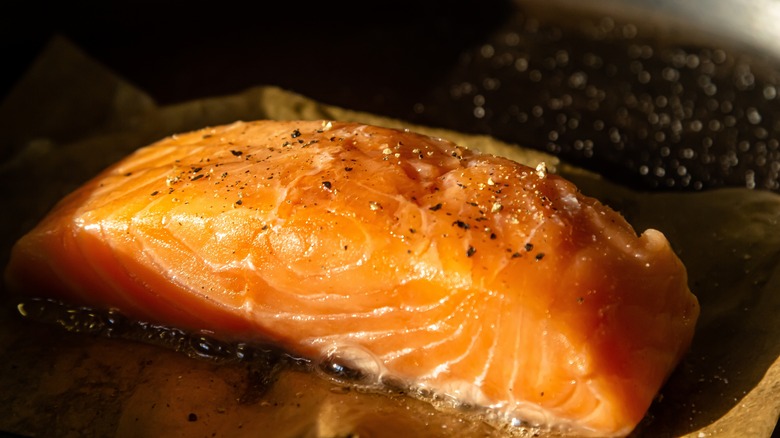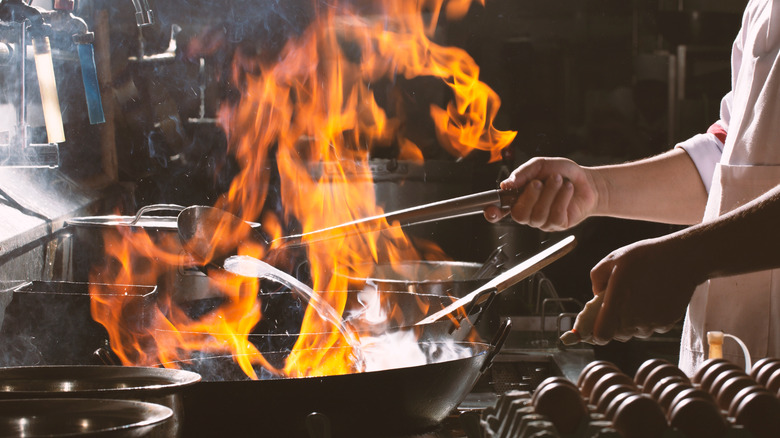Parchment Paper Is The Key To Frying Fish That Doesn't Stick To The Pan
Nonstick pans don't last forever, but that doesn't mean you have to live with food getting stuck to your pan every time you cook. Fish, in particular, is very annoying to cook with if you don't have a nice new nonstick surface. The meat is delicate and flaky, perfect for your tastebuds but not great when the thing falls apart before it gets to your mouth.
Over the past year, a TikTok trend has been taking the cooking scene by storm: Using parchment paper to turn any pan into a nonstick pan. It's as easy as it sounds, simply place a layer of parchment paper on the bottom of your oiled pan, spray some more oil on top, and place the fish filet on the paper. Not only will the fish cook perfectly, but it'll also save you a lot of time scrubbing the burnt bits off your pan afterward. This works particularly well for fish, but you can use it for any type of pan-fried cooking you can think of.
Is this safe?
As with a lot of content on TikTok, this food trend comes with some serious safety warnings. Most parchment paper has a temperature limit of around 425 degrees Fahrenheit. The surface of your pan can easily reach the upper 500s when placed on high, and exceeding 425 degrees isn't hard even on medium. You'll likely end up with a brown or black piece of parchment paper by the end. This isn't necessarily dangerous, but if it crisps up too much and you're using a metal spatula, you could accidentally chip pieces of the parchment paper off which then end up in your food and then your stomach. It might be a good idea to use a wooden or silicon utensil to avoid this.
Another thing to keep in mind is that parchment paper is flammable. This is especially important if you're using a gas stove. The flames from the stove could reach up and catch the paper on fire if it's a big enough piece to be hanging over the edges. You could cut a small piece and make sure it isn't near the edges, but the risk is still there.
The parchment paper trick does work, but if you already have a functioning nonstick pan, you're better off avoiding these risks and simply using some oil to keep the fish from sticking. If you're confident in the kitchen, you can also use the Leidenfrost effect to keep the fish from getting stuck to stainless steel pans.

